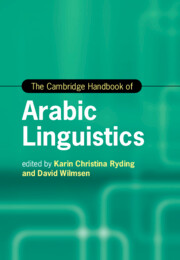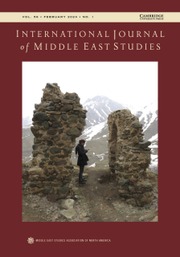Argentina
This lively introduction to the linguistics of Arabic provides students with a concise overview of the language's structure and its various components: its phonology, morphology and syntax. Through exercises, discussion points and assignments built into every chapter, the book presents the Arabic language in vivid and engaging terms, encouraging students to grasp the complexity of its linguistic situation. It presents key linguistic concepts and theories related to Arabic in a coherent way, helping to build students' analytical and critical skills. Key features:
• Study questions, exercises, and discussion topics in every chapter encourage students to engage with the material and undertake specific assignments
• Suggestions for further reading in every chapter allow readers to engage in more extensive research on relevant topics
• Technical terminology is explained in a helpful glossary
- Provides the best introduction for students to the structure and history of the language, a market which is populated by textbooks with less inclusive coverage
- Pedagogical features provide help to instructors and students engaging with this difficult area of study
- Presents a systematic introduction to the key components of Arabic structure: phonology, morphology and syntax which orients students towards analysis and critical thinking about Arabic language
Reviews & endorsements
'This highly accessible book serves two constituencies: Arabists who wish to learn the basics of linguistic theory and how it applies to Arabic, and linguists who wish to learn the basics of Arabic and how it fits into linguistic theory. This double task is performed with great clarity and economy. Karin C. Ryding deserves our thanks for filling this gap in the study of Arabic. Her book will appeal to a wide readership and will be required reading for generations of students.' Yasir Suleiman, His Majesty Sultan Qaboos Bin Sa'id Professor of Modern Arabic Studies, University of Cambridge
'Addressing itself almost exclusively to the Arabic of writing and formal declamation, this work provides a much-needed introductory framework for applying the analytical principles of general linguistics to the language.' David Wilmsen, American University of Beirut
'… thanks to its clarity and precision, it will be a very valuable tool both for advanced students and non-specialist teachers of Arabic …' Manuel Sartori, translated from Bulletin critique des annales islamologiques
Product details
March 2014Hardback
9781107023314
197 pages
235 × 156 × 15 mm
0.41kg
Available
Table of Contents
- Abbreviations and symbols used in this book
- 1. Arabic linguistics: overview and history
- 2. Arabic phonology
- 3. Arabic phonotactics and morphophonology
- 4. Arabic syllable structure and stress
- 5. Introduction to Arabic morphology
- 6. Derivational morphology: the root/pattern system
- 7. Non-root/pattern morphology and the Arabic lexicon
- 8. Arabic inflectional morphology
- 9. Syntactic analysis and Arabic
- 10. Arabic syntax I: phrase structure
- 11. Arabic syntax II: clause structure
- Appendix 1. Fields of linguistics and Arabic
- Appendix 2. Arabic transcription/transliteration/romanization
- Appendix 3. Nominal declensions
- Glossary of technical terms.




